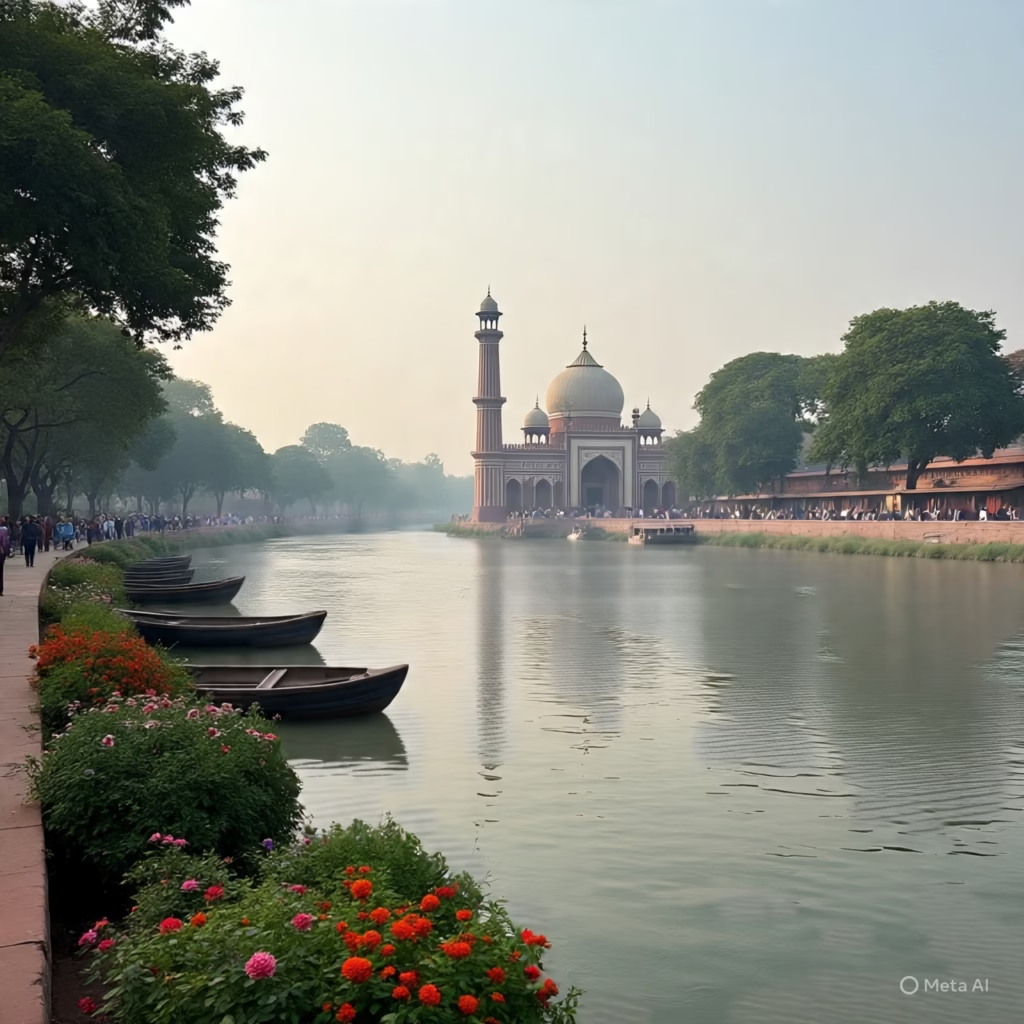
Introduction
Ravi river Confluence: Where It Meets the Chenab River
Ravi river is one of the five rivers of Punjab, which is strongly intertwined with history, culture, and agriculture of South Asia. The confluence of the Ravi river and Chenab river then occurs in the Punjab province of Pakistan after the latter travels almost 720 km. It is a meeting place that tightens irrigation systems, forms fertile plains as well as carries on historical value. This blog shows where exactly the Ravi river in Pakistan merges with the Chenab, waters travel routes, and its significance to the development of the region.
Where Does the Ravi River Meet the Chenab?
The Ravi river flows through India and Pakistan before finally joining the Chenab River. This confluence takes place near Ahmadpur Sial in Jhang District, Punjab, Pakistan. At this point, the Ravi merges into the Chenab, which then flows further southwest toward the Indus River.
This Ravi river confluence creates a stronger water body that supports vast agricultural lands across Punjab. Farmers rely heavily on this union for fertile soil and irrigation systems.
The Journey of the Ravi River Chenab to Its Confluence
I explain actively and clearly.
1. Ravi River Origin: The river rises in the Himalayas in Himachal Pradesh, India, near Rohtang Pass.
2. Course in India: It flows through Chamba Valley, enters Jammu and Kashmir, and continues into Punjab.
3. Along the Border: The river touches the India–Pakistan boundary before flowing entirely into Pakistan.
4. In Pakistan: The Ravi river in Pakistan passes Lahore, supports agriculture, and finally merges with the Chenab in Jhang District.
This journey from the Himalayas to the Ravi river confluence spans 720 km of cultural and geographical significance.
Importance of the Ravi Chenab Confluence
I highlight key points actively.
Irrigation Power: The Ravi’s waters strengthen the Chenab, which feeds major canals in Punjab. This supports wheat, rice, and sugarcane cultivation.
Cultural Value: Ancient civilizations thrived along both rivers. The Indus Valley Civilization and later Mughal cities benefited from these fertile banks.
Hydrological Role: The confluence balances floodwaters, reduces overflow risks, and enhances groundwater recharge.
Geopolitical Factor: Under the Indus Waters Treaty (1960), India controls Ravi waters upstream, while Pakistan manages irrigation downstream, making the confluence vital.
Ravi River Chenab in Pakistan
The Ravi river in Pakistan plays a decisive role. After entering Pakistan near Lahore, it flows southwest and provides lifelines to Punjab’s farmers. Balloki Headworks and Sidhnai Barrage regulate its flow, diverting water into canals. Without this river, Punjab’s agriculture would face severe shortages.
The Ravi river confluence with Chenab makes this water distribution even stronger, because the combined river system irrigates millions of acres across Punjab.
Environmental Concerns at the Confluence
I describe challenges actively.
1. Pollution: Industrial waste and urban sewage, especially near Lahore, degrade water quality.
2. Climate Change: Faster glacial melting affects water supply at the Ravi’s Himalayan source.
3. Flood Risks: Monsoon rains and dam releases increase flood potential downstream at the confluence.
4. Overuse: Excessive canal diversion reduces natural flow and harms ecosystems.
Sustainable management of the Ravi river confluence remains critical for ecological balance.
Historical and Cultural Legacy
I keep the tone active and engaging.
The Ravi river and Chenab share deep cultural roots. Ancient poets celebrated their beauty. Vedic texts mention the Ravi as Iravati. Lahore, one of South Asia’s historic cities, rose on its banks. The merging of Ravi and Chenab symbolizes the unity of Punjab’s five rivers, which gave the region its name—Panj-ab meaning “five waters.”
Future Prospects
Authorities in both India and Pakistan invest in new infrastructure. India’s Shahpurhttp://India’s Shahpur Kandi project maximizes upstream water use, while Pakistan upgrades canal systems connected to the Chenab. The Ravi river confluence remains a strategic point for both agriculture and diplomacy.
FAQ Section
Q1: Where does the Ravi River meet the Chenab River?
The Ravi river meets the Chenab near Ahmadpur Sial in Jhang District, Punjab, Pakistan.
Q2: Why is the Ravi–Chenab confluence important?
The confluence strengthens irrigation, supports agriculture, and balances water flow across Punjab.
Q3: What is the total length of the Ravi River?
The Ravi river stretches about 720 km, with 320 km in India and 400 km in Pakistan.
Q4: What is the role of the Ravi River in Pakistan?
The Ravi river in Pakistan irrigates farmland through Balloki and Sidhnai headworks before merging with Chenab.
Q5: Does the Indus Waters Treaty affect the Ravi River?
Yes, the treaty gives India rights to Ravi waters, while Pakistan manages downstream flow and canals.
Conclusion
The Ravi river travels from the Himalayas to Pakistan, where it merges with the Chenab near Jhang. This Ravi river confluence supports agriculture, culture, and water management for millions. The river’s role in Pakistan’s Punjab makes it one of the most critical lifelines in South Asia.
Call to action
Follow us on social Media, and get in touch with us on Blogs@manyviral.com
https://manyviral.com/can-trumps-big-beautiful-bill-pass-the-senate/
You might to like read this blog

Leave a Reply